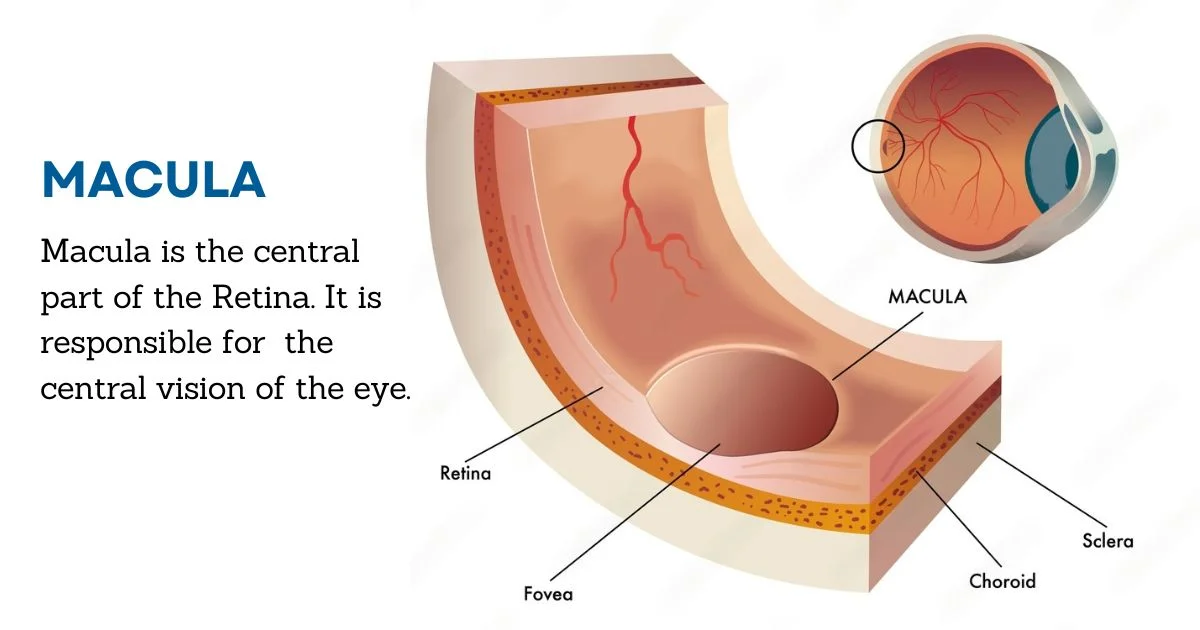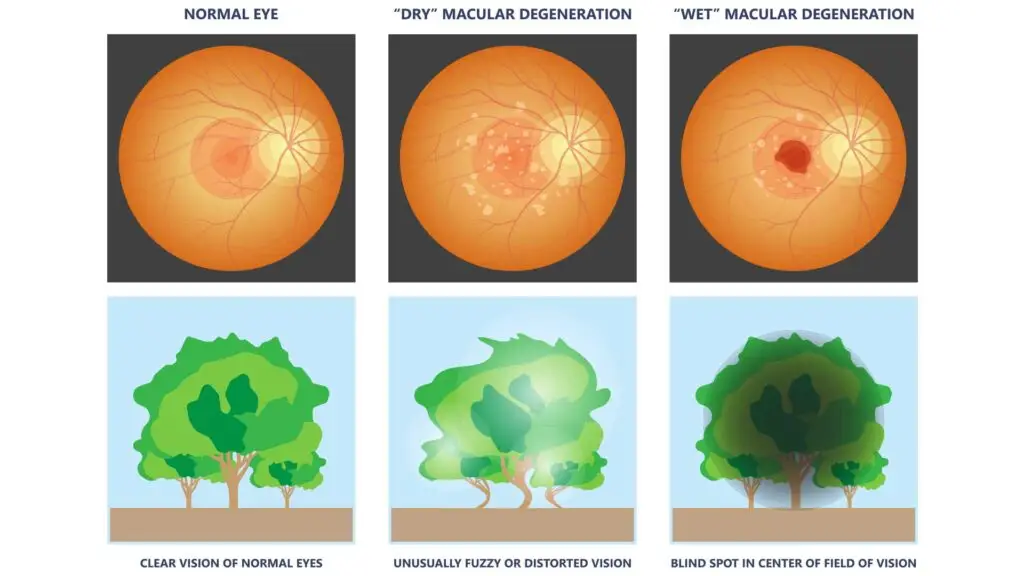Overview
Macular degeneration, commonly referred to as age-related macular degeneration (AMD), is the single largest cause of sight loss in the developed world and affects more than 10 million Americans. It usually affects people over the age of 60, but can occur earlier. AMD is painless and typically affects both eyes, with loss experienced in central vision, while peripheral vision is preserved.
What is the macula?
The macula is the most sensitive part of the retina and is responsible for central vision and seeing fine detail with clarity.

Types of AMD
Wet AMD
In wet AMD, abnormal blood vessels grow into the macula and leak blood or fluid, causing scarring and a rapid loss of central vision. Wet AMD can develop suddenly—rapid referral to a specialist is essential since it can be treated if caught quickly.
Dry AMD
Dry AMD is the most common type. It involves gradual deterioration of the retina as cells die off over time and are not regenerated. Up to 15% of people with dry AMD progress to wet AMD, so any sudden vision changes should be evaluated promptly.

Symptoms
- Distortion or bending of straight lines (e.g., door frames, lampposts)
- Dark spots in central vision
- Fading of colors
- Difficulty adapting from dark to light environments
- Blurred vision
- Objects may appear to change shape, size, color, move, or disappear
- Sensitivity to bright lights
- Words may disappear while reading
Reducing Risk
While the exact trigger is unclear, risk increases with age and family history. Healthy lifestyle steps may help:
- Stop smoking
- Eat a balanced diet with plenty of fruits and vegetables (leafy greens may help slow dry AMD)
- Moderate alcohol consumption
- Maintain a healthy weight and exercise regularly
Treatment Options
There is currently no cure for either type of AMD. For dry AMD, care focuses on maximizing remaining vision (e.g., magnifiers for reading). Wet AMD can be treated with anti-VEGF medications to help stop new blood vessels from forming and slow vision loss. In some cases, laser therapy may be considered for wet AMD, though only a subset of patients are candidates. Consult your optometrist promptly if your vision changes.